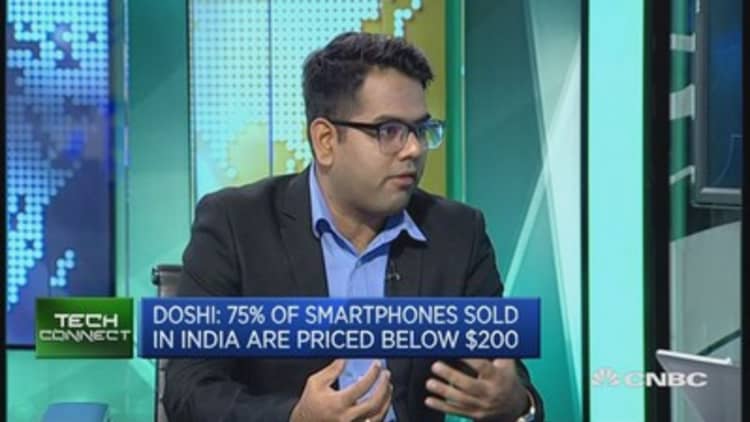The affordable smartphone space is heating up in India, with Chinese tech giant Lenovo the latest company to join the fray with the recent launch of its Lenovo P2 smartphone in the country which is home to more than 1 billion people.
While China is the largest smartphone market in the world, market saturation means that manufacturers have started looking for new markets to penetrate.
The natural choice has been India, which beat the U.S. to become the world's second largest smartphone market in terms of users last year, according to Counterpoint Research, a market research firm. India is also the world's fastest-growing smartphone market, according to IDC.
The key selling point of Lenovo's P2 model has been its battery, which the company says is able to withstand three days of use on a single charge. The P2 model costs 16,999 Indian rupees ($249.45), making it a mid-to-high end option when compared to the more affordable models popular in India.
"If you look at the overall smartphone market in India, it's all sub-$100 and more than 50 percent of the market is dominated by (these) phones," Satish Lele, SVP at Frost & Sullivan, told CNBC's "The Rundown."

To target this segment of the Indian smartphone market, Lenovo's strategy involves a line of affordable smartphones, including its A2010 model that launched in 2015. At the time, the A2010 was the cheapest 4G smartphone in the market. It cost a mere INR4,990 ($73.)
"(Lenovo) has its low-end phones and it also has its mid and high-end (options) through the Motorola acquisition that it made," Lele said, "All the players in the market are trying to tap into the different possibilities that you can get across the different price points."
Lenovo is not alone. Other Chinese tech companies, such as Xiaomi and Oppo, have been muscling in on the action.
"Under $200, there are two segments of vendors that are gaining traction. You have the Indian vendors, like Micromax, Karbonn, Lava (and) Intex, which sell phones really cheap. They can go as cheap as $30," said Rushabh Doshi, an analyst at Canalys.
"You also have the Chinese companies, who have seen excellent success. You have Oppo, Vivo (and) Lenovo, who are selling phones that are a bit (pricier), around $150 to $200, but they're giving Apple and Samsung a run for their money because (of the) comparable specifications."
Yet, even with the surge in smartphone sales, the digital divide across developed and developing countries continues to persist.

Smartphone ownership in the India in 2015 stood at only 17 percent, according to the Pew Research Center. In comparison, 72 percent of respondents in the U.S. owned a smartphone.
Nevertheless, the gap could soon be narrowed. The center's report on global smartphone ownership found that ownership rates in developing countries were "rising at an extraordinary rate."
In addition, the majority of respondents in developing countries who did not own smartphones stated that they owned some type of mobile device, such as a feature phone. Feature phones are mobile devices that can be used for limited functions, such as accessing the internet, but do not have the advanced set of features a smartphone has.
The feature phone market in India remains larger than the smartphone market in India, Frost & Sullivan's Lele said. These phones are also much cheaper than a full service smartphone and can cost as little as $30 in India.
"When you go to that price point of $25 to $30, you will be targeting the feature phone market in India, which will eventually convert into the smartphone (market) in the future. That's another major trend we will see - the transition away from the feature phone to the smartphone," Lele said.

